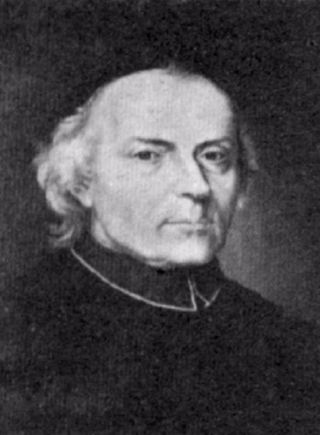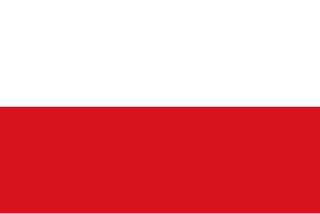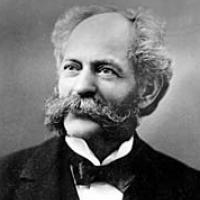
Moravia is a historical region in the east of the Czech Republic and one of three historical Czech lands, with Bohemia and Czech Silesia.

Olomouc is a city in the Czech Republic. It has about 102,000 inhabitants, and its larger urban zone has a population of about 384,000 inhabitants (2019).

Johann Christoph Gottsched was a German philosopher, author and critic of the Enlightenment.

Lodovico Antonio Muratori was an Italian Catholic priest, notable as historian and a leading scholar of his age, and for his discovery of the Muratorian fragment, the earliest known list of New Testament books.

Although the Kingdom of Bohemia, both of the Lusatias, the Margraviate of Moravia, and Silesia were all under Habsburg rule, they followed different paths of development. Moravians and Silesians had accepted the hereditary right of the Austrian Habsburgs to rule and thus escaped the intense struggle between native estates and the Habsburg monarchy that was to characterize Bohemian history. In contrast, the Bohemian Kingdom had entrenched estates that were ready to defend what they considered their rights and liberties. The Habsburgs pursued a policy of centralization and conflict arose, which was further complicated by ethnic and religious issues.

Magnoald Ziegelbauer was a Benedictine monk and ecclesiastical historian.

Palacký University Olomouc is the oldest university in Moravia and the second-oldest in the Czech Republic. It was established in 1573 as a public university led by the Jesuit order in Olomouc, which was at that time the capital of Moravia and the seat of the episcopacy. At first it taught only theology, but soon the fields of philosophy, law and medicine were added.

Friedrich Wilhelm Graf von Haugwitz, Czech: Fridrich Vilém Haugwitz; 11 December 1702, Saxony – 30 August 1765, Deutsch Knönitz, Habsburg Moravia) was Supreme Chancellor of the United Court Chancery and the head of Directorium in publicis et cameralibus under Maria Theresa of Austria. He also served as one of the key advisors in instituting Maria Theresa's reforms. Haugwitz attempted to bring both centralization and economic reform to the Habsburg lands.
The history of Moravia, one of the Czech lands, is diverse and characterized by many periods of foreign governance.
Hieronymus Pez was an Austrian Benedictine librarian and historian.
Oliver Legipont was a German Benedictine bibliographer.
Josef Vratislav Monse was a Moravian lawyer and historian.

Joseph Leopold Freiherr von Petrasch was a soldier, writer and philologist. In 1746 he founded the Olomouc-based Societas incognitorum, the first Enlightenment-inspired learned society in the Habsburg territories.

Johann Karl Nestler, Czech: Jan Karel Nestler was an Austrian scientist in the field of hereditary traits, professor of natural history and agriculture at the Philosophical Faculty of University of Olomouc, dean of the faculty and rector of the university, and doyen of the Czech agriculture science.
Following the Thirty Years' War, the education in Moravia was firmly in the hands of Jesuits. Moravian nobility were keen to expand the range of areas taught at the University of Olomouc beyond just theology and philosophy. Despite opposition from the Jesuits, the Emperor Leopold I authorized the introduction of secular legal studies in 1679. However, the quarrels with the Jesuits became so intense that soon the law Professors had to leave the University and continued their lectures first in private premises, later in the building of Olomouc court. They were paid by the Moravian nobility, and since 1709 the Professors were appointed directly by the Emperors. While in the next decade the Jesuits accepted the Professorate within the University, the Nobility was seeking to enlarge the education opportunities.

Mathias Franz Graf von Chorinsky Freiherr von Ledske was first Bishop of the Roman Catholic Diocese of Brno, Imperial and Royal senior Privy Counsellor of the Imperial and Royal Privy Council of the Habsburg monarchy and with his equally eminent brothers the first Counts of Chorinsky.

The Margraviate of Moravia was one of the Lands of the Bohemian Crown within the Holy Roman Empire and then Austria-Hungary, existing from 1182 to 1918. It was officially administered by a margrave in cooperation with a provincial diet. It was variously a de facto independent state, and also subject to the Duchy, later the Kingdom of Bohemia. It comprised the historical region called Moravia, which lies within the present-day Czech Republic.
Franz, Freiherr von Petrasch was an Austrian general officer serving in the Austrian Empire during the French Revolutionary Wars. He was the third generation of a bourgeois family in which two brothers, seeking adventure, joined the Habsburg military and rose through the ranks. The family was elevated to the Moravia nobility in the early eighteenth century, and to the Hungarian nobility in 1722.
In the seventeenth century, a wealth family of bourgeois origins named Petrasch emerged to some prominence in Moravia, near Brno. In the latter part of the century, seeking excitement, two scions of the family, Ernst Anton and Maximilian, joined the Habsburg military and served in the border campaigns against the Ottoman Empire. Eventually, the brothers acquired distinction in such actions as the Battle of Lugos and the Uskok War they came to the notice of such commanders as Prince Eugene of Savoy, General Claudius Florimund Mercy, and the Louis, the Duke of Baden. The brothers achievements which continued in the military careers of their sons; by the latter third of the eighteenth century, the descendants of both brothers had acquired the title of Freiherr in the county of Moravia. In 1722, the titles of both brothers were converted from a Bohemian dignity to a Hungarian one.
Ignaz Cornova was a Jesuit priest who had spent his life and career in Bohemia. His family provenance was Italian, but his social and professional network revolved around the ethnically German community centred on Prague. He can be variously described as an historian, a teacher, an author and an early representative of the European Catholic Enlightenment movement. He was also a prominent Freemason.













